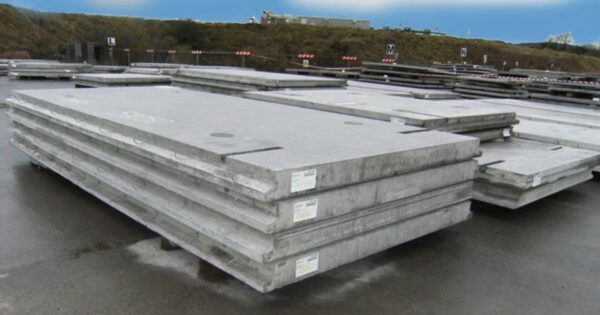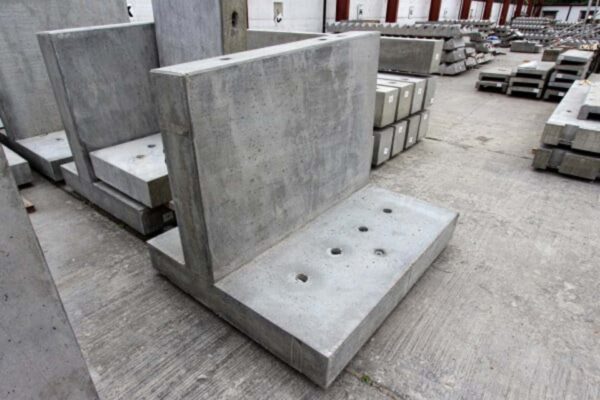Aluminum has emerged as a highly versatile and sustainable building material in modern construction.
With the addition of alloying elements like copper, manganese, and magnesium, physical and mechanical properties can be altered to meet the requirements of various building applications.
Aluminum building materials offer benefits like durability, corrosion resistance, low maintenance, design flexibility with finishes and colors, fire safety, and eco-friendliness.
Specifically, alloys resist water and UV damage for long-lasting performance.
They require little upkeep compared to other metals. With anodizing and painting, it can achieve beautiful aesthetic effects.
The non-combustible nature (A1 fire rating) allows heat and smoke to escape in a fire, reducing damage. Studies show that its materials avoid negative impacts on indoor air quality and the environment.
With extraordinary attributes like these, presents endless possibilities for innovative building engineering uses.
From external cladding and walls, to windows, railings, and more – it improves durability and sustainability in modern building design. Read on to learn additional details on how aluminum benefits construction applications.
Key Properties of Aluminum in Construction
It boasts several innate material properties that make it exceptionally well suited for architectural applications:
Strength
Aluminum alloys used in construction can achieve strength-to-weight ratios comparable to structural steel. When formed into optimized sections, frames and components take on high strength with lower mass.
Corrosion Resistance
Aluminum naturally develops an outer oxide film that effectively resists corrosion. This gives it excellent longevity compared to steel in exterior building applications. Minimal maintenance requirements add to sustainability benefits.
Light Weight
As one of the lightest structure metals, it allows easier transportation and reduces loads in structural designs. This aids construction schedules and cuts foundation requirements.
Formability
Extruding and fabrication processes easily shape versatile profiles for Cladding, railings, windows and curtain wall frameworks. Custom structural forms suit precise building needs.
Recyclability
Aluminum is 100 percent recyclable without any loss of properties, even for closed-loop reuse in architecture. Reclaimed content further reduces its embodied energy.
Use of Aluminum in Building Construction
From structural framing through exterior finishes, building components bring resilience and performance. Common architectural roles include:
Structural Framing – Lightweight aluminum frame systems in floors, roofs and load-bearing walls reduce seismic and wind forces in high performance buildings while cutting construction schedules.

Windows and Doors – casement, awning and sliding window/door units with thermally broken frames offer modern aesthetics and reliable operation across extreme climates.
Cladding and Panels – Rainscreen systems using aluminum composite material panels create striking, resilient exterior facades able to withstand weathering effects over decades.
Railings and Sun Shades – Sleek contemporary railings, canopies and louvered sun shades take advantage of formability and corrosion resistance in outdoor installations.
Curtain Wall Framing – Stick-built or unitized framing anchors expansive curtain walls in commercial architecture with slender profiles and durability.
Benefits and Drawbacks of Architectural Aluminum
Aluminum building components provide multiple advantages along with a few limitations to consider:
Benefits
- High strength-to-weight efficiency
- Resilient corrosion resistance
- Quick, easy formability into diverse profiles
- Reflective surface with contemporary aesthetics
-100 percent recyclable material
Drawbacks
- Higher first cost premiums over steel
- Thermal bridging can lead to condensation risks
- Susceptible to galvanic corrosion without proper isolation
- Requires protective coatings in acidic, alkaline or salt spray exposure
With mindful material selection and design details that maximize its upsides while minimizing limitations, it creates value as a lightweight, sustainable building solution.
Notable Examples Using Aluminum
Notable architecture incorporating components includes:
🌟 Burj Khalifa – World’s tallest building utilizes wall panels, spandrels and windows across its 200+ stories.

🌟 Walt Disney Concert Hall – Curving brushed cladding reflects and illuminates this iconic Los Angeles performance venue.
🌟 One World Trade Center – Anodized panels cloak this structure, playing off variegated brightness/color shifts.
🌟 International Commerce Centre – Soaring 118-story commercial skyscraper in Hong Kong extensively features windows and curtain wall framing.
These and countless other landmarks showcase versatility in structural and aesthetic roles.
Key Criteria for Aluminum Building Components
Several factors guide appropriate aluminum product selection and detailing:
Structural Performance
Structural engineers evaluate strength needs, deflection criteria, connection requirements and reinforcing methods to leverage lightweight without compromising resiliency.
Alloy Selection
Varying magnesium, silicon, copper, zinc and manganese alloying elements tune aluminum performance across strength, formability, weldability and corrosion resistance metrics.
Coatings
Anodized, painted or metal laminate overlays boost aluminum durability. Organic finishes applied under strict protocols enhance surface hardness and longevity.
Thermal Bridging Solutions
Insulated thermal barrier strips, composite inserts and glass fiber reinforcements reduce energy losses in fenestration profiles.
Getting material specifications right the first time ensures optimal quality and functionality.
Sustainable Structural Aluminum Framing
Aluminum structural framing transforms architectural goals for resilience, efficiency and sustainability into reality. Key roles and benefits include:
Long Clear Spans
Robust yet lightweight aluminum framing enables column-free interior layouts with support-free spans up to 30 meters for flexible space planning as building needs evolve.
Accelerated Construction
Pre-assembled modular wall, floor and roof cassettes swiftly enclose buildings and accelerate interior fit outs to meet fast-paced construction schedules.
Seismic and Wind Resistance
Aluminum’s high strength-to-weight performance enhances earthquake or extreme wind event resilience as part of a building’s lateral force-resisting system.
Overall, structural frames provide durable and dependable support for high performance buildings targeting net zero energy use or stringent sustainability certifications.
Cladding Buildings in Aluminum Panels
As exterior building envelopes grow ever more intricate and extreme across global architecture, composite panels bring resilient and striking facades to life.
Lightweight Cladding Attachments
Aluminum’s inherent light weight compared to materials like stone, concrete or steel cuts substructure demands. Wall anchors, tracks and clips simplify complex geometries.
quick rainscreen installation
cladding components go up rapidly. Panelized assemblies accelerate enclosure to keep other trades moving on accelerated schedules.
Bold Aesthetics
Vibrant metallic or color-shifting aluminum finishes combined with perforations, textures and form distortions create dynamic contrast across buildings.
Tested Wind Resilience
Interlocking umbrella panels withstand intense wind uplift forces, driving rain infiltration, seismic events and hurricanes proven over decades.
Architectural metal cladding in ideal balances beauty, performance and function over long life cycles.
Why Choose Windows and Doors?
In ever-growing numbers, savvy architects, builders and homeowners select durable, low-maintenance windows and doors. What factors make aluminum the preferred choice?
All-Weather Performance – Thermally broken frames with weatherstripping and insulating glass units keep interior spaces comfortable in extreme cold, heat, wind, or rain.
Forced Entry Resistance – Robust profile strength, secure locking hardware and glass lamination provide reliable security protecting people and property.
Design Versatility – Sleek narrow-line framing aesthetics match modern or historic architecture while shaping extensive custom forms.
Life Cycle Value – Aluminum windows and doors deliver decades of smooth functioning, easy upkeep, energy savings and long service life over multiple owners.
In the quest for worry-free fenestration rewarding occupants year after year, aluminum gets the job done beautifully.
Preventing Aluminum Corrosion
Unprotected building products carry a critical vulnerability – susceptibility to corrosion in wet, aggressive environments. But modern solutions confer robust anti-corrosion armor.
Protective Coatings – Anodized finishes, baked-on paints and laminated polymer overlays shield from chemical/UV exposure while adding color. Upkeep renews protection over the years.
Maintenance – Periodic cleaning using gentle, pH-neutral detergents removes grime with minimal water. This prevents deterioration in hidden crevices.
Compatibility Planning – Isolate aluminium from other metals like steel or copper through non-conductive gaskets. This averts galvanic corrosion caused by contact between dissimilar metals.
Quality Products – Specifying reputable commercial brands ensures rigorously tested, certified building components optimized to avoid pitting, flaking or staining even in coastal areas.
Mindfulness at each decision point unlocks fullest potential across building lifecycles.
Best Practices for Extrusion Design
Custom shapes fine-tuned to precise building project needs depend on both metallurgy mastery and design savvy. Key extrusion optimization guidelines include:
Match Alloy to Demands
Dense 6000 series formulas containing magnesium and silicon best balance moderate strength for structural sections with excellent finishing characteristics.
Optimize Geometries
Strategic shapes browse loads efficiently while avoiding difficult extrusion angles. Sharp corners and thin walls risk defects.
Design Smart Drainage
Channels, drills holes and other drainage mechanisms prevent trapped moisture leading to corrosion in horizontal or enclosed aluminum elements.
Control Tolerances
Anticipate thermal expansion/contraction across large components and specify reasonably achievable fabrication tolerances.
Pushing extrusions too far risks quality problems. Collaborative upfront planning ensures building components meet longevity expectations.
Streamlined Aluminum Wall Panel Installation
Periodically maintaining the exterior building envelope ensures sustained performance while preserving architectural visions. What helps aluminum panel facades maintain their striking visual presence over decades of exposure?
Drainage Inspection – Check weep holes and drainage channels for blockages allowing moisture accumulation in wall cavities. Clear leaves or debris buildup.
Hardware Adjustments – Tighten any loose facade component connections while taking care not to over-torque fasteners. Confirm adequate panel support.
Sealant Top-Off – Visual inspection and sealant pull tests identify failing joints. Clean, prime and reseal perimeter joints before leakage threatens water barriers.
Protective Coating Renewal – Reapply protective anodized or painted coatings at 5-7 year intervals to restore corrosion resistance against weathering effects.
By combining attentive maintenance inspections with timely protective renewals, building owners safeguard valuable facade investments.
Conclusion
From structural framing to exterior cladding to interior finishes, aluminum has proven itself a versatile sustainable building material ready for growing challenges ahead in architecture.
With responsible care selecting premium alloy products and designing components holistically for long service, materially advances tomorrow’s high performance built environments today.







